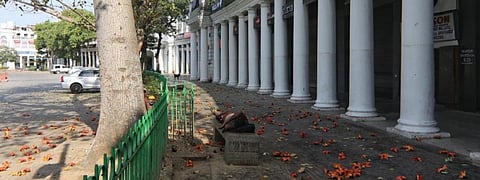

It is the time for truth. As the end of the 21-day lockdown period in India — imposed to contain the novel coronavirus (COVID-19) spread — draws nearer, everyone is waiting to know about the country’s exit strategy.
Unfortunately, there is not much information available on this. On April 2, 2020, the prime minister met all chief ministers and asked them to devise a plan to move to the mainstream. The special empowered committees set up to help deal with the pandemic have been asked to think of a solution.
One such group met on the April 6, according to media reports. The 'Empowered Group on Strategic Issues Related to Lockdown’ had representation from industry organisation like Federation of Indian Chambers of Commerce & Industry and Confederation of Indian Industry.
But here lies the problem. Would this group be interested in what the common man wants? We are all desperate for the lockdown to end, but are we prepared for what would happen if it does?
The problem is that nobody knows what to do. Even countries like China and UK are merely experimenting. Unfortunately, this is one case where science, too, is not of much help.
Most countries are trying to “flatten the curve” or reduce the number of cases through social distancing and hand hygiene. India was one of the first few countries to take action on this front — even before the first case was reported, it released an advisory on January 17 on travel safety and began screening passengers from China.
Despite the unprecedented lockdown, we are not as near to controlling the pandemic. The reproduction number R0 is currently at 1.81. Had the infection spread been under control, the number would have been below 1.
If R0 is greater than 1, infections increase until the epidemic peaks, before it declines due to acquisition of herd immunity. As the number of cases continue to increase, it is clear that we are yet to peak.
“There is no real estimate of when the pandemic will end. But we are seeing signs of the curve flattening for countries with advanced stage of epidemic due to interventions put in place. We cannot possibly say which intervention is more effective but collectively are helping control the pandemic,” said Swapnil Mishra, research associate with the School of Public Health, Imperial College London.
Mishra is the lead author of a report on 11 European countries, which was published on March 30 by the MRC Centre for Global Infectious Disease Analysis.
He added that “interventions would have to be kept in place for a while more since the reproduction number is more than one”.
While Mishra did not indicate what a “while more” could mean, a model proposed by researchers from University of Cambridge suggested two options for India.
The first one suggested a lockdown of 21 days, followed by 28 days, and 18 days more — spaced by five days of relaxation. This would have to continue till June 10, 2020.
The second suggested a continuous lockdown of 49 days, till May 13, 2020.
“The pandemic will continue till we have acquired herd immunity, which means till most of the population has been infected. Or till we find a vaccine,” said Ronojoy Adhikari, faculty of mathematics at University of Cambridge.
He added: “If we let the epidemic proceed unimpeded in India, it will be over by the end of August. But there will be a death toll to pay. If we control the epidemic by sustained social distancing, we will have to wait till a vaccine is found, which will be at least a year.”
He added that the country is staring at a horizon of at least a year before it limps back to normalcy.
The aforementioned study is yet to be peer reviewed. However, as the end of the current lockdown looms near, it could provide the government some material to work on.
Adhikari stressed that there are multiple lockdown protocols that could bring infection levels down to certain values. But their feasibility cannot mathematically ascertained, since economic, medical, social and ethical factors must be weighed in.
Models are just models and there are problems with them.
A new model published on a preprint server on April 6 suggested that the existing ones have a glitch. When the new model developed by Alastair Grant, professor at the University of East Anglia, United Kingdom, was compared with a published model of COVID-19 in Wuhan before isolation and social distancing measures were imposed, it was seen that the earlier model underestimated the peak infection rate by a factor of three.
It also substantially overestimated how long the epidemic will continue after the peak. If this can be taken at face value, then this is good news.
When asked whether India was doing enough to flatten the curve, Mishra said this it was difficult to comment — at least for now. He attributed the uncertainty to the lack of reliable data, coupled with the fact that interventions in place are not followed strictly.
He, however, added the if community infection has started in India from areas such as Dharavi in Mumbai and Nizammudin in Delhi, then interventions needed to be maintained “for a while to keep the curve flat”.
But, we can improve our data by testing more, said Adhikari. The more we test, the better an idea we get of the infection spread. This will help develop better mathematical models and take more informed policy decisions.
This, long with a robust health infrastructure, could certainly help India flatten the curve.
Researchers at the Hebrew University of Jerusalem have developed mathematical models to help countries decide whether their health infrastructure can take the load of sudden increase in cases. Thereby, improving infrastructure could give India another option for an exit strategy.